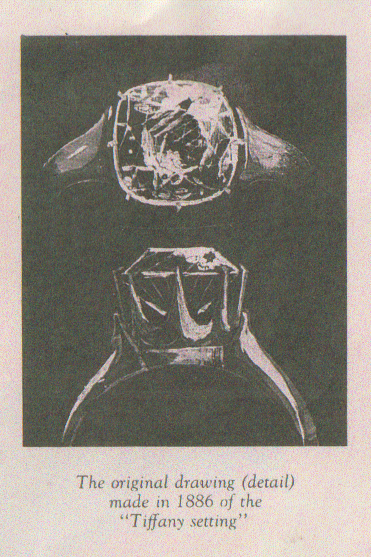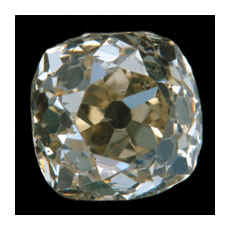A great example of how things change.
Look at your engagement or wedding ring. Is it a Tiffany style solitaire? If so, I have some trivia for you.
Charles Lewis Tiffany, designed the original Tiffany setting in 1886 during the middle of the Victorian era. Many of the rings during this era were heavily engraved and the designs were heavily influenced by floral and architectural motifs. As a general rule, many of the gems and diamonds were set low into the ring.

Many rough, uncut diamonds are found as square crystals as they have a cubic crystal structure. For this reason, many were cut with a squarish outline. You can find many “Old Mine Cuts” like this. It also preserves the weight of the gem as less material is removed and the stone can sell for more. If you have ever seen a modern princess cut diamond, this is the main reason they are cut that way.

During the Victorian era, most diamonds were cut by eye by skilled cutters who could come close to the ideal look in a diamond even though they did not have an understanding of how or why diamonds bent light the way they did. Mnay of these can be found labeled as “Old European Cuts”. The main limitation on getting an accurate cut was the equipment used to cut the gems. These look somewhat modern, but they have a larger culet and a very small table (45%) by modern standards.

There are many stories about why Charles Lewis Tiffany designed the Tiffany setting, but the real reason is probably lost in the mists of time. I suspect that he wanted Tiffany & Co. to stand out from everyone else. Something every retailer and jeweler wants. It creates demand. Everyone else at the time were making rings with low set gems and with complicated designs and engraving. So in my opinion, I think he went the other direction and designed a setting that was minimalistic and highlighted the gemstone itself by raising it up in the setting a bit. His store was already the preferred destination for fashionable ladies and gentlemen in search of jewels and timepieces with a style that represented a distinct American style that was distinct from other jewelers of the Victorian era.So I believe this design was a logical evolution of his artistic aesthetic.
You will notice that this looks very different from the Tiffany solitaire of today. The original had 8 prongs coming to a very fine tip so the focus will be on the well cut diamond in the setting. I think it is a fair assumption that EVERY Tiffany diamond was well cut, otherwise it would not be in the cases at Tiffany’s.
While there were several who came before him in working to describe the optics and properties of diamonds, Marcel Tolkowsky who was an engineer as well as a diamond cutter by trade, was the first person to use a mathematical formula for cutting diamonds proportionally. Marcel Tolkowsky published his thesis “Diamond Design: A Study of the Reflection and Refraction of Light in Diamond.” in 1919. While it was a short book, it made a huge difference in how diamonds were cut. With modern computers, his original suggestions for cutting diamonds has been updated, but not by much. The Tolkowsky Round Brilliant Cut (RBC) is still the standard for a well cut gem.
I have not been able to find any solid evidence of how the design evolved during the Edwardian era after Tolkowsky published his paper, but I do know it did not take long for the diamond cutting industry to improve the equipment and infrastructure to begin cutting diamonds to the published guidelines. In only 10 or so years you could find RBC’s in ads and catalogs of the time.
The next step is to find out when die-struck 4 and 6 prong heads came into common usage. This is when the “modern” Tiffany setting appeared. The the shoulders of the shank now come right under the head holding the stone.
It is something to note the number of prongs as the ring evolved. The original had 8 prongs. while minimal, with a squarish gem, you need eight to maintain symmetry. With a round diamond, 6 or 8 prongs will give the impression of a slightly larger diameter than the set diamond really is. 4 prongs will give a slightly squarish look to the ring. As to which you might prefer, I always look at what design you might want with your wedding band. A 4 or 6 prong can make quite a difference in a jewelry design.
If you have questions, please comment below and I will try to answer them as best I can.
